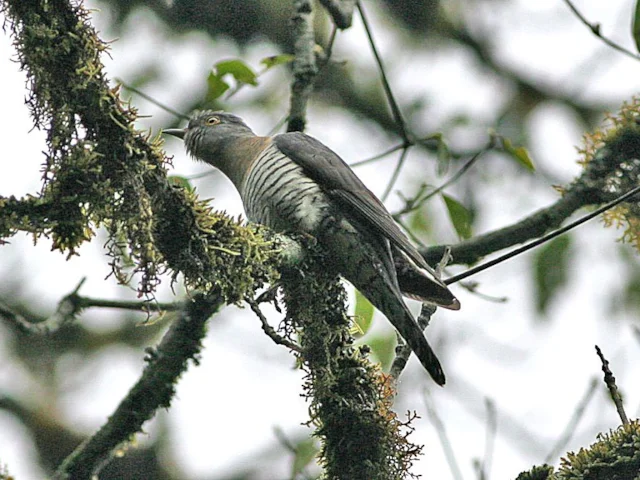Cuckoos that mimic hawks
ce7e12c9-539f-4940-8a11-b131fff1d9a2

The parasitical members of the cuckoo family have been found to impersonate Sparrowhawks to scare their hosts from the nest.
A Cambridge University survey of the world's parasitical cuckoo species (not all partake in this notorious behaviour) comparing the barring of the underparts with local raptor species, particularly Sparrowhawk relatives in the genus Accipiter, has revealed a significant correlation.
This kind of cross-species impersonation is known as 'Batesian mimicry' - evolving to resemble a harmful species when the organism not harmful itself, to fool potential predators into not eating it. It makes sense for such a mimic to co-habitat with the more poisonous or dangerous species, so that potential predators recognise it better.
The cuckoos themselves mimic the eggs of their hosts so that they bond with the parasitic chick as if it were their own. some adult cuckoo species appear harmless, but now it seems that far more haev evolved to resemble a predator of their host species to care them from the nest, enabling a time window for the cuckoo to lay its egg in the vacated nest.
In the study, five genera of Old World cuckoos were compared with up to eight raptor species that shared the same ranges and habitats, and found that most of the cuckoos matched the raptors with at least one selected plumage character. Barring in particular was a common plumage parallel, as seen on our familiar Common Cuckoo and its eastern relatives.
These similarities were not influenced by habitat, but were most similar when a hawk and cuckoo species lived in tandem. There was certainly some variation in similarity with mimicked raptor species, but several species pairs matched very closely, even down to the proportionate spacing of their barring.
Reference
Gluckman, T-L and Mundy, N I. 2013. Cuckoos in raptors' clothing: barred plumage illuminates a fundamental principle of Batesian mimicry. Animal Behaviour xxx: 1-17. www.sciencedirect.com/science/article/pii/S0003347213004247.
A Cambridge University survey of the world's parasitical cuckoo species (not all partake in this notorious behaviour) comparing the barring of the underparts with local raptor species, particularly Sparrowhawk relatives in the genus Accipiter, has revealed a significant correlation.
This kind of cross-species impersonation is known as 'Batesian mimicry' - evolving to resemble a harmful species when the organism not harmful itself, to fool potential predators into not eating it. It makes sense for such a mimic to co-habitat with the more poisonous or dangerous species, so that potential predators recognise it better.
The cuckoos themselves mimic the eggs of their hosts so that they bond with the parasitic chick as if it were their own. some adult cuckoo species appear harmless, but now it seems that far more haev evolved to resemble a predator of their host species to care them from the nest, enabling a time window for the cuckoo to lay its egg in the vacated nest.
 |
| Black Baza bears a resemblance in its general arrangement of plumage patterns to Himalayan Cuckoo (above) that may be more important than it at first seems. Photo: NatureAtYourBackyard (commons.wikimedia.org). |
In the study, five genera of Old World cuckoos were compared with up to eight raptor species that shared the same ranges and habitats, and found that most of the cuckoos matched the raptors with at least one selected plumage character. Barring in particular was a common plumage parallel, as seen on our familiar Common Cuckoo and its eastern relatives.
These similarities were not influenced by habitat, but were most similar when a hawk and cuckoo species lived in tandem. There was certainly some variation in similarity with mimicked raptor species, but several species pairs matched very closely, even down to the proportionate spacing of their barring.
Reference
Gluckman, T-L and Mundy, N I. 2013. Cuckoos in raptors' clothing: barred plumage illuminates a fundamental principle of Batesian mimicry. Animal Behaviour xxx: 1-17. www.sciencedirect.com/science/article/pii/S0003347213004247.

